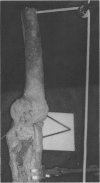Abstract
The mechanisms solely responsible for automatic rotation during terminal extension were investigated by means of destruction experiments on knee joint structures. These are the posterior cruciate ligament (PCL), the anterior cruciate ligament (ACL) and the curvature of the medial femoral condyle. The first mechanism is based on the extraordinary obliquity of the constantly taut PCL guiding bundle, which produces torque in the final extension stage. The second mechanism depends on the fact that the ACL becomes 'too short' towards the final extension stage, which in turn is due to the shape of the articular surfaces. The third mechanism is caused by the deflection of the medial femoral condyle by the intercondylar eminence of the tibia. Each of the collateral ligaments can, in their own right, prevent excessive automatic rotation. On the one hand, the mechanism of the automatic rotation is reversed during initial flexion by the medial collateral ligament (this would be 'too short' in the case of nonreversal). On the other hand, it is reversed by the popliteus muscle. It is suggested that automatic rotation is not related to securing an amuscular stance (locking mechanism).
Full text
PDF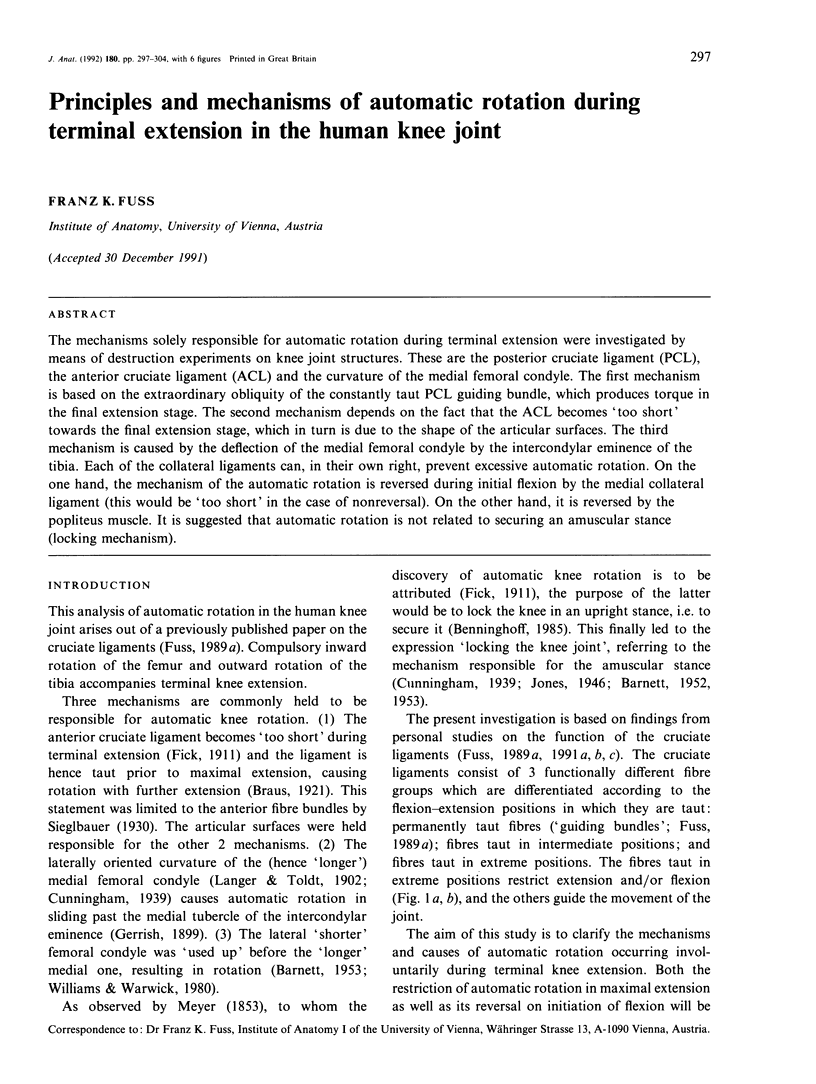
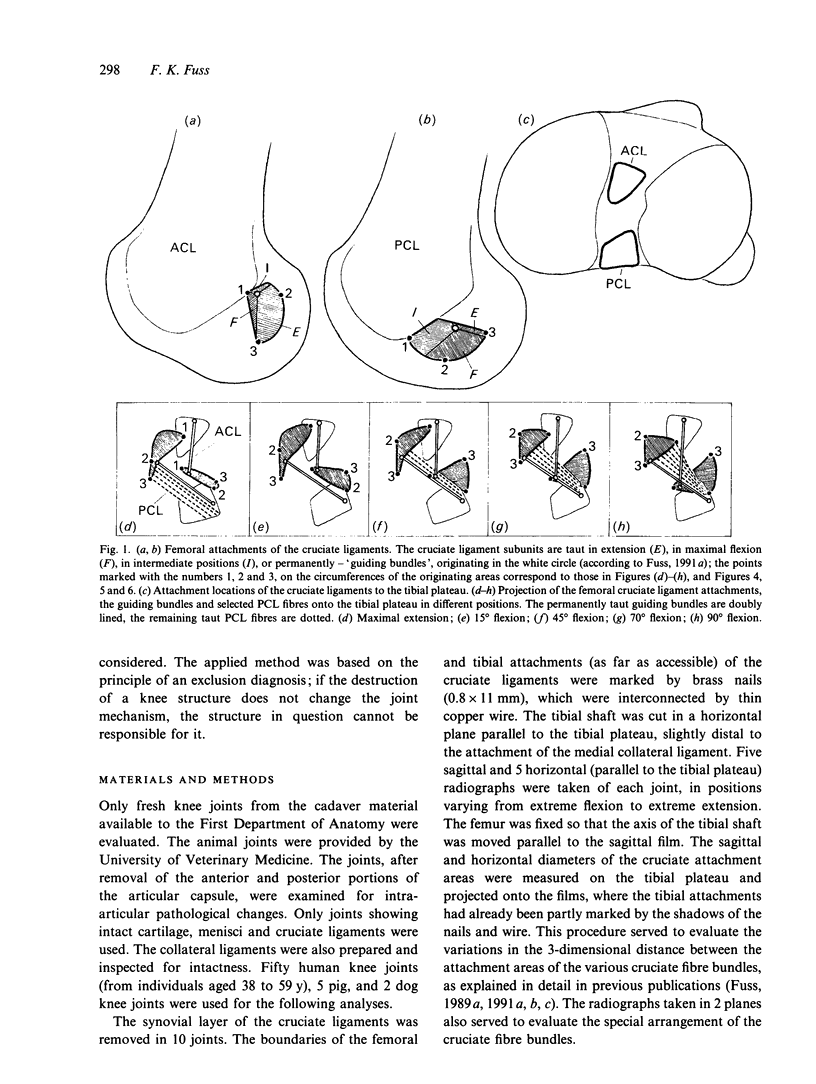
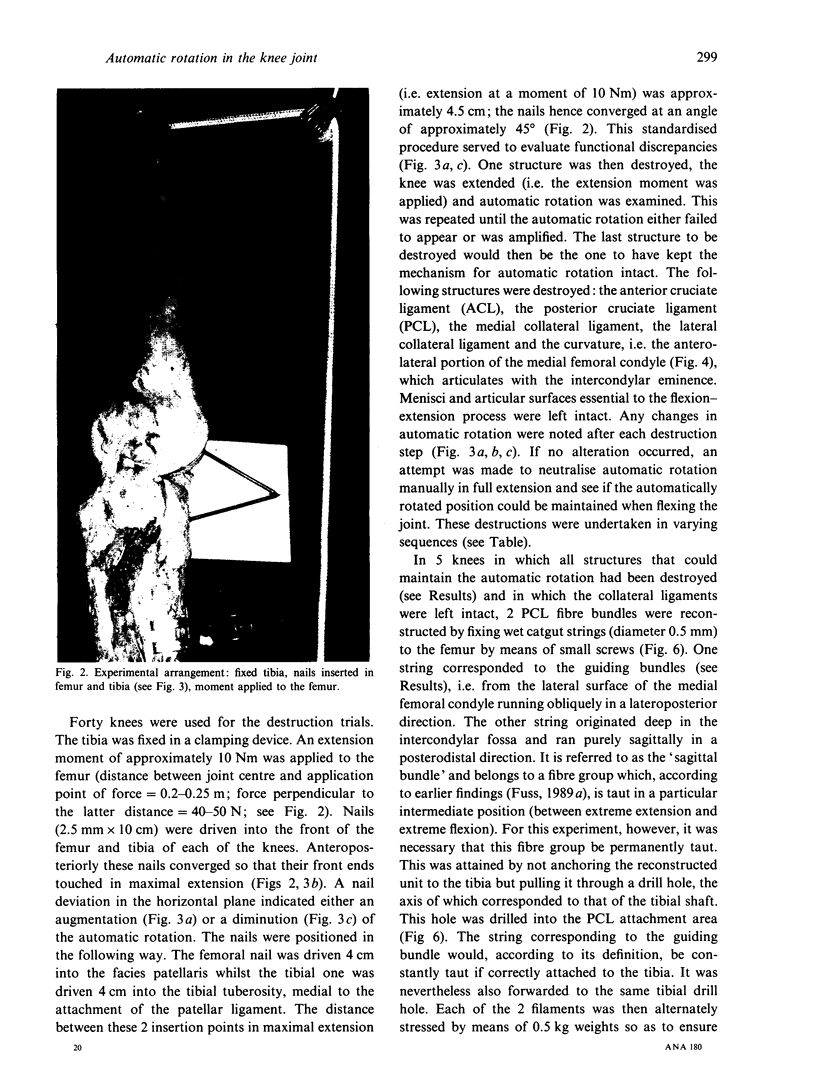
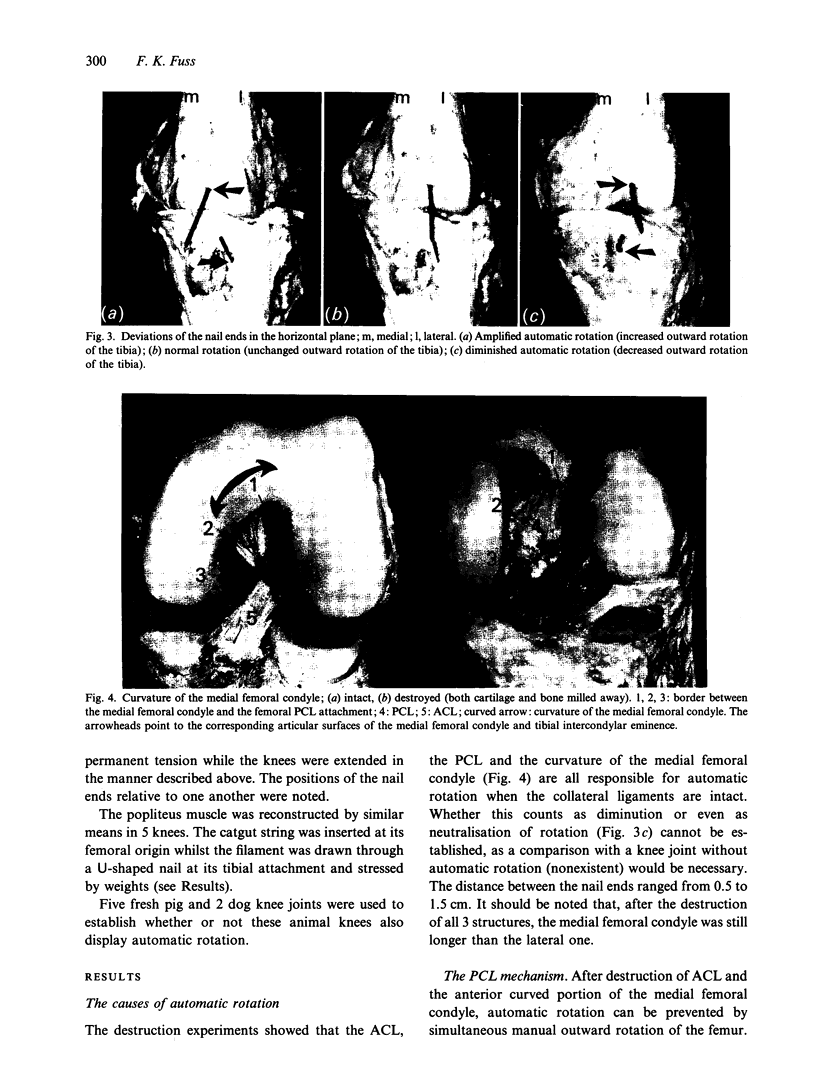
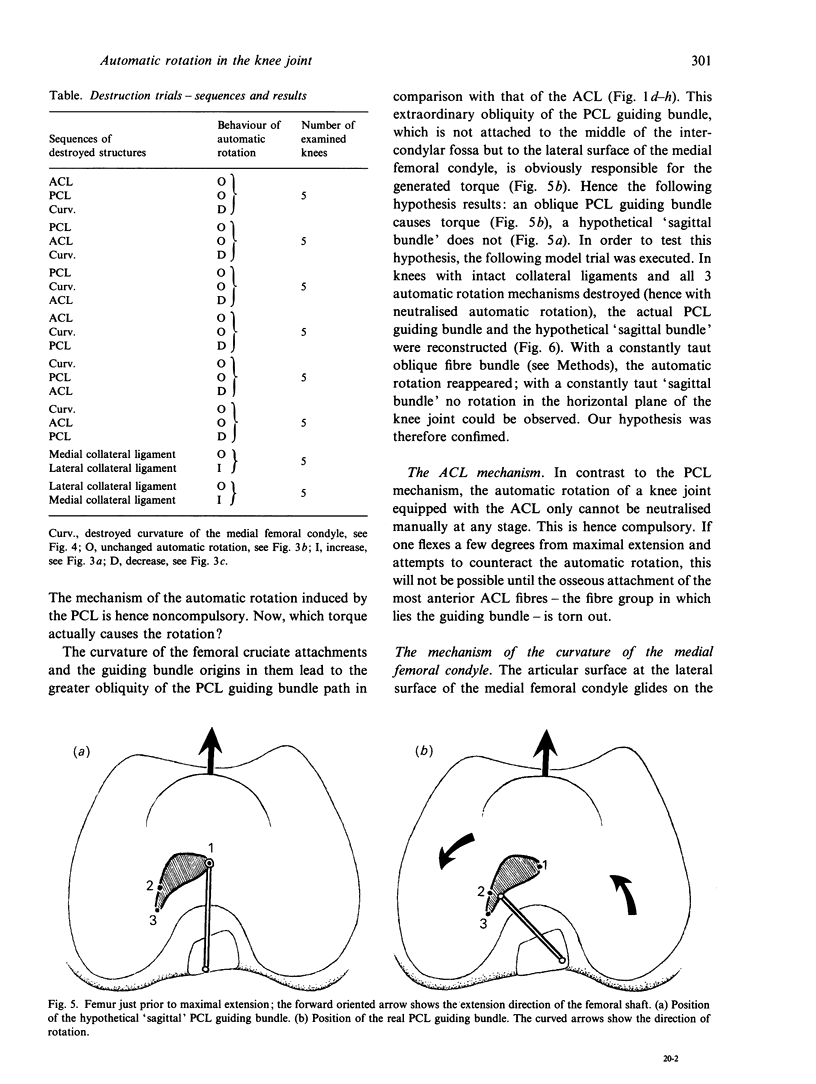
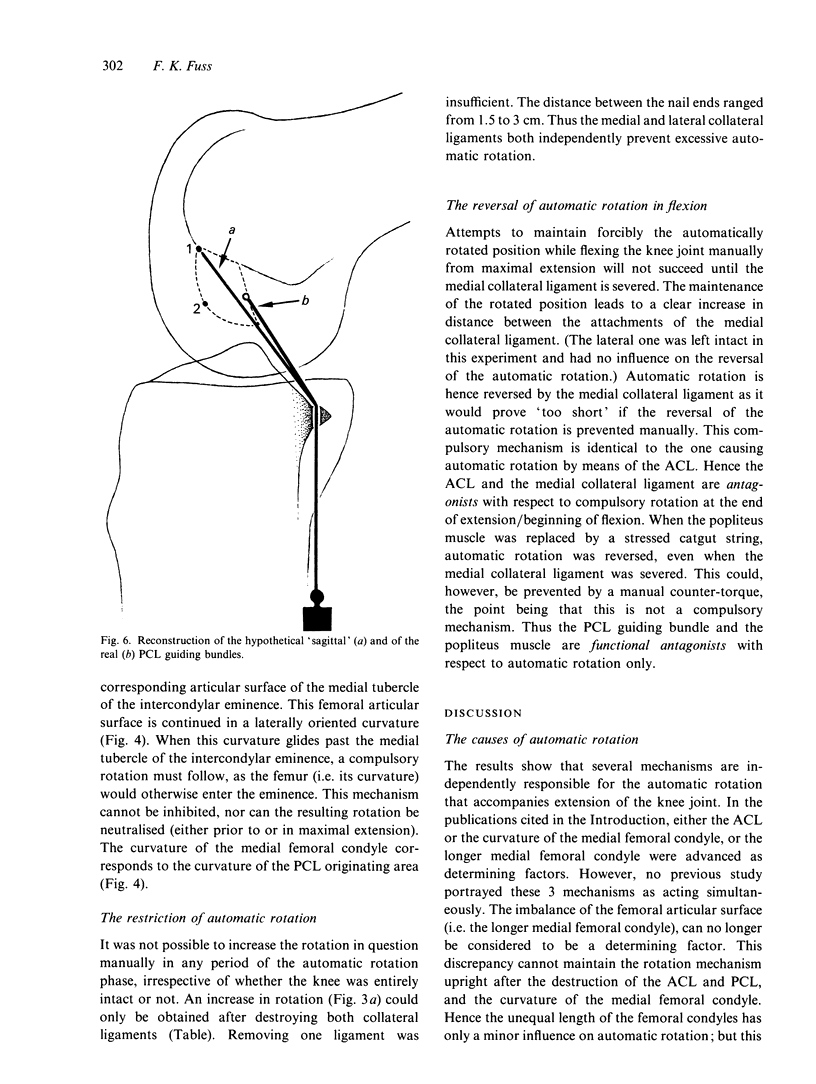
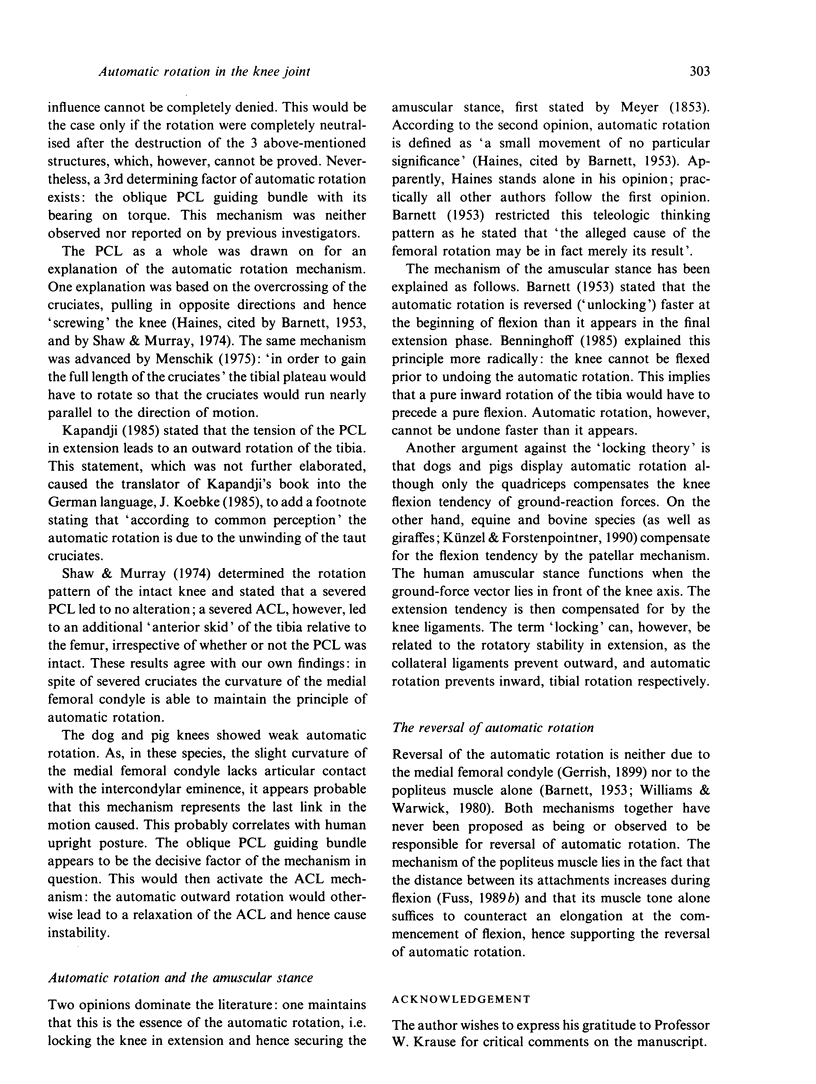
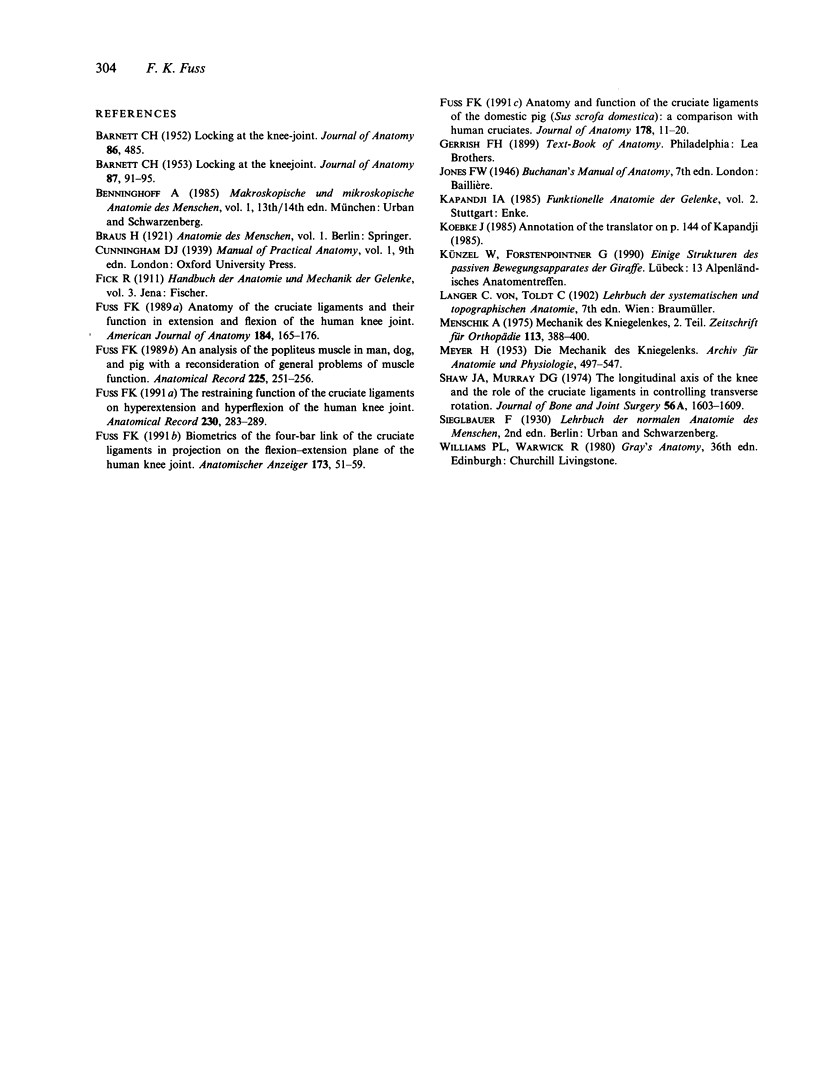
Images in this article
Selected References
These references are in PubMed. This may not be the complete list of references from this article.
- BARNETT C. H. Locking at the knee joint. J Anat. 1953 Apr;87(2):91–95. [PMC free article] [PubMed] [Google Scholar]
- Fuss F. K. An analysis of the popliteus muscle in man, dog, and pig with a reconsideration of the general problems of muscle function. Anat Rec. 1989 Nov;225(3):251–256. doi: 10.1002/ar.1092250311. [DOI] [PubMed] [Google Scholar]
- Fuss F. K. Anatomy and function of the cruciate ligaments of the domestic pig (Sus scrofa domestica): a comparison with human cruciates. J Anat. 1991 Oct;178:11–20. [PMC free article] [PubMed] [Google Scholar]
- Fuss F. K. Anatomy of the cruciate ligaments and their function in extension and flexion of the human knee joint. Am J Anat. 1989 Feb;184(2):165–176. doi: 10.1002/aja.1001840208. [DOI] [PubMed] [Google Scholar]
- Fuss F. K. Biometrics of the four-bar link of the cruciate ligaments in projection on the flexion-extension plane of the human knee joint. Anat Anz. 1991;173(1):51–59. [PubMed] [Google Scholar]
- Fuss F. K. The restraining function of the cruciate ligaments on hyperextension and hyperflexion of the human knee joint. Anat Rec. 1991 Jun;230(2):283–289. doi: 10.1002/ar.1092300217. [DOI] [PubMed] [Google Scholar]
- Menschik A. Mechanik des Kniegelenkes. II. Teil: Schlussrotation. Z Orthop Ihre Grenzgeb. 1975 Jun;113(3):388–400. [PubMed] [Google Scholar]
- Shaw J. A., Murray D. G. The longitudinal axis of the knee and the role of the cruciate ligaments in controlling transverse rotation. J Bone Joint Surg Am. 1974 Dec;56(8):1603–1609. [PubMed] [Google Scholar]



